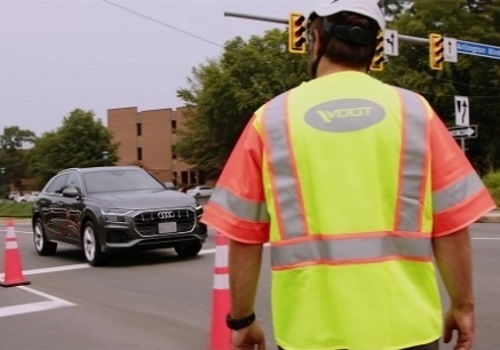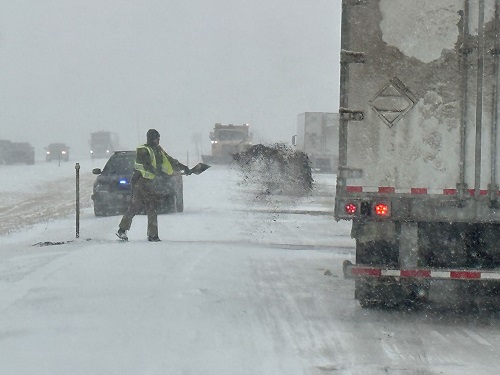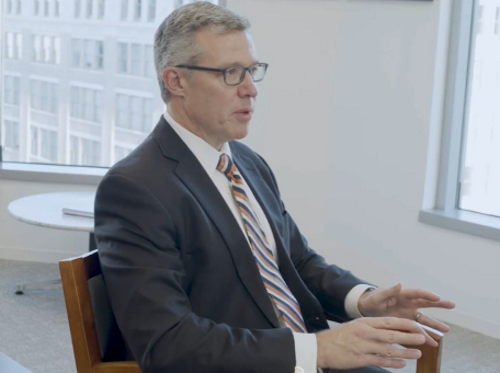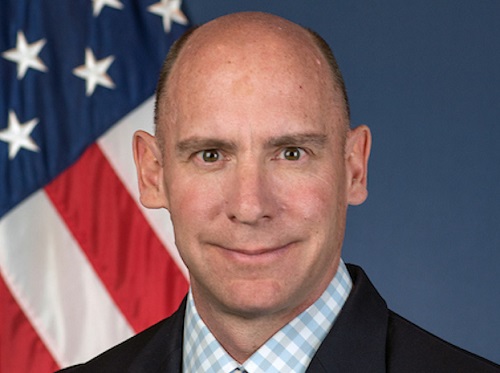In a recent blog post, Brian Cronin (above) – acting director of the U.S. Department of Transportation’s Intelligent Transportation Systems Joint Program Office or “ITS JPO” – talked about how vehicle-to-everything or V2X connectivity for motor vehicles is critical to saving lives on roadways nationwide across a multitude of scenarios.
[Above photo by USDOT]
He explained that V2X is a suite of communication technologies designed to save lives while also enabling improvements in mobility, climate, and the economy.
“A key priority of the USDOT [is to develop] a nationwide, interoperable V2X connectivity to support a wide array of applications that will support a host of benefits,” Cronin said. “USDOT is working with infrastructure owner-operators, vehicle original equipment manufacturers, mobile network operators, and many others to build this ecosystem.”

The USDOT’s plan for building that V2X “ecosystem” – officially entitled “Saving Lives with Connectivity: A Plan to Accelerate V2X Deployment” – seeks to use technology as a way to make the nation’s transportation system more visible to users, regardless of their mode of travel.
To illustrate that “visibility,” Cronin described key areas where V2X can deliver major safety benefits.
“Imagine a city where every intersection broadcasts real-time traffic signal status information and every traffic signal received location information on all travelers,” he said.
“Imagine every pedestrian, bicyclist, and vehicle could send and receive real-time information. In this city, pedestrians obscured by large vehicles would now be seen, and drivers would receive and alert when a vehicle runs a red light,” he noted. “And these wireless communications between vehicles, traffic signals, sensors, and pedestrians are secure and private.”

Now imagine a different scenario, Cronin said, involving a rural highway with fog or a blizzard rolling in. “How do truckers see if there is a vehicle quickly stopping ahead? How do drivers know if they are approaching a work zone? Imagine receiving a digital alert a mile ahead. Imagine knowing that you should slow down and change lane,” he pointed out.
“Secondary crashes are common, particularly in bad weather, but they don’t have to be,” Cronin noted. “V2X communications allow cars to share information with other cars about the crash minutes ahead of time. V2X addresses these all-too-common situations and many more because it allows road users to see beyond their line of sight.”
The American Association of State Highway and Transportation Officials made similar points in comment letters submitted to USDOT as well as at public listening summits hosted by the agency over the past year.
Preserving wireless communication spectrum for V2X and other vehicle connectivity needs has been a key focal point for AASHTO and state departments of transportation over the last several years.
In fact, AASHTO and the Intelligent Transportation Society of America filed a lawsuit in 2021 in the District of Columbia Circuit Court to prevent the FCC from reallocating swaths of the 5.9 GHz wireless spectrum to non-transportation uses – a lawsuit ultimately dismissed by that court in August 2022.

That lawsuit sought to reverse the November 2020 decision by the FCC to shift 60 percent of the 5.9 GHz spectrum to unlicensed, non-transportation uses, and preserve the full 75-megahertz (MHz) band within the overall 5.9 GHz spectrum for transportation communications.
AASHTO and ITS America sought to preserve this “safety spectrum” for transportation systems such as C-V2X.
Jim Tymon, AASHTO executive director, noted in previous comments that over the next two to three years, the USDOT should exert “strong federal leadership and consistent, sustained, and synergistic policies across all modes for V2X deployment” while encouraging automakers to commit to deploying V2X technologies to mirror their commitment level to building electric vehicles.
“We must continue efforts by all stakeholders to cement standards that will make V2X usable and interoperable,” he added. “In order to see deployment at scale, many, many others will have to be trained so that we have a workforce that can install, operate and maintain the V2X technology.”
 Nation
Nation
Registration Open for 2026 AASHTO Washington Briefing
December 12, 2025 Nation
Nation

